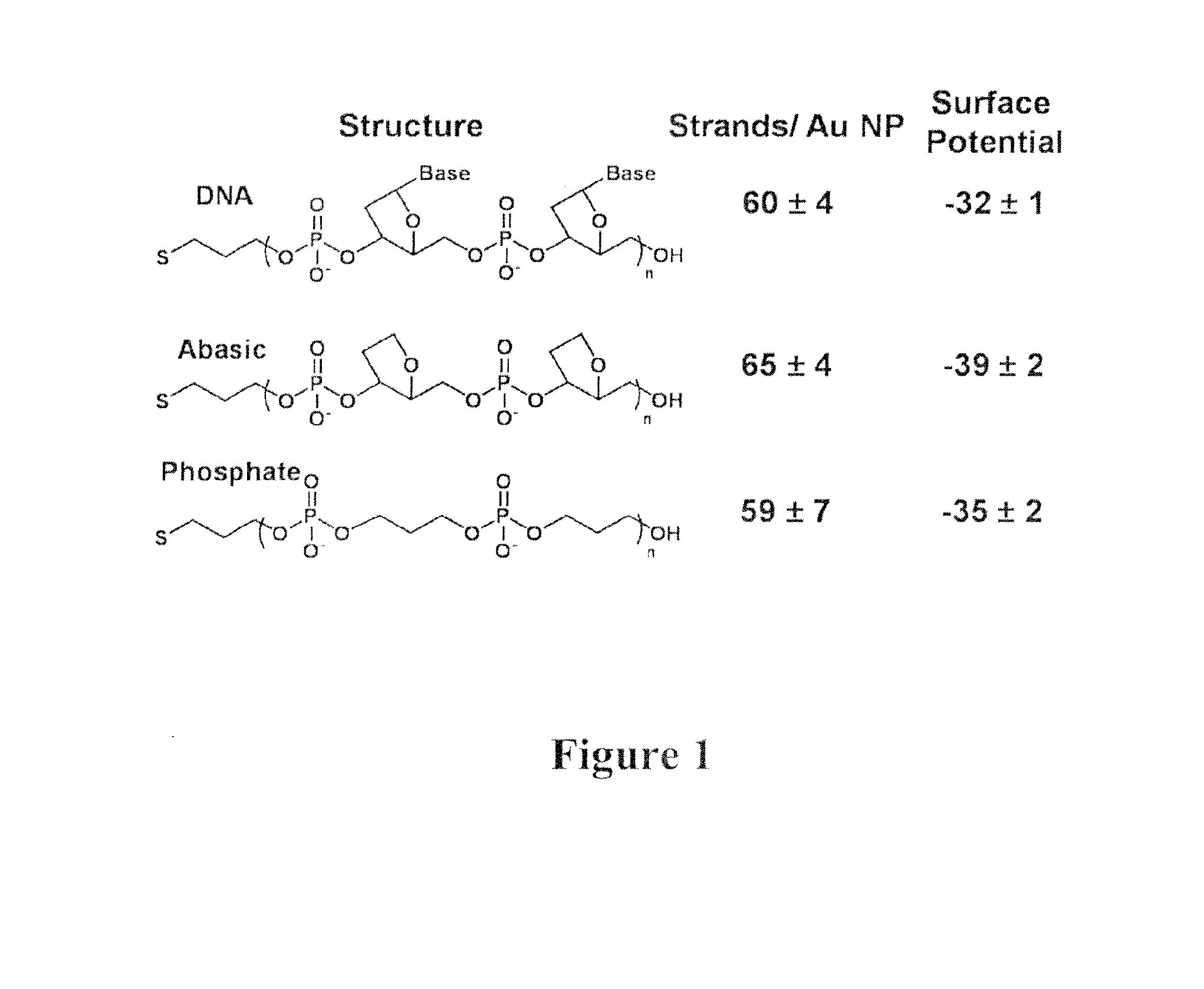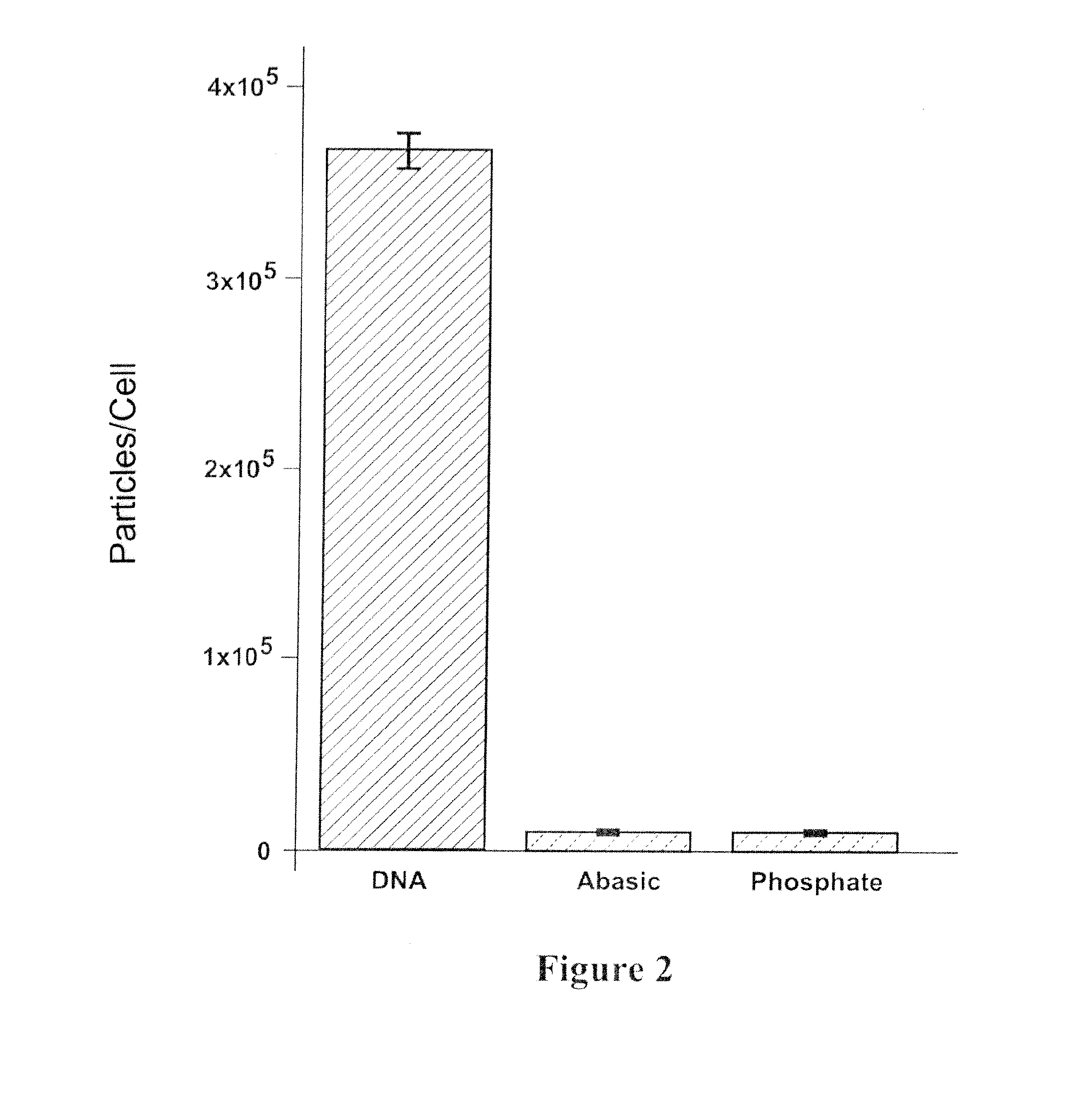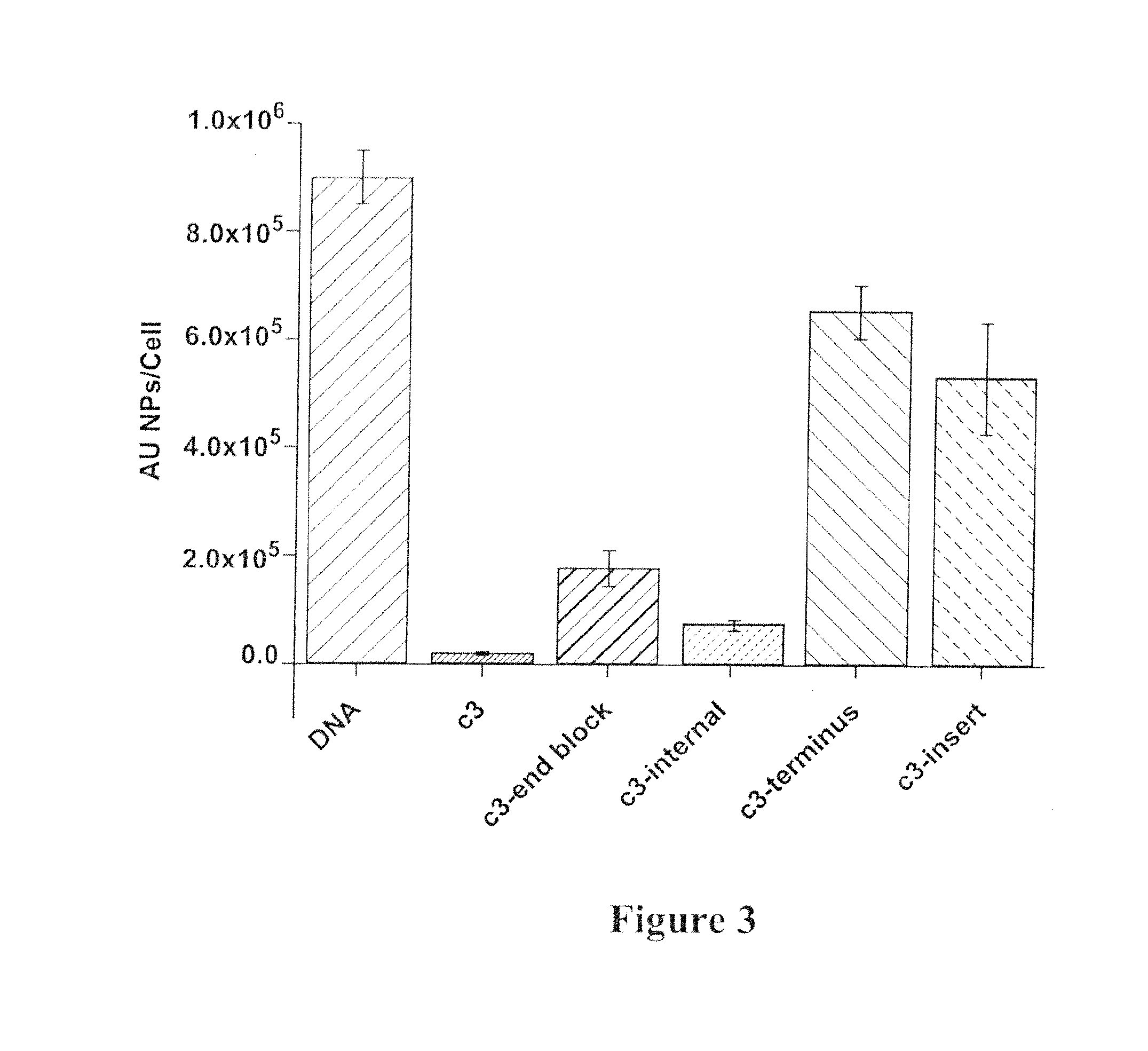Oligonucleotide specific uptake of nanoconjugates
a technology of nanoconjugates and oligonucleotides, which is applied in the field of nanoparticles, can solve the problems that oligonucleotides are widely considered poor candidates for crossing the cellular membran
- Summary
- Abstract
- Description
- Claims
- Application Information
AI Technical Summary
Benefits of technology
Problems solved by technology
Method used
Image
Examples
example 1
Preparation of Nanoparticles
[0079]Citrate stabilized gold nanoparticles (13±1 nm) were prepared using procedures known in the art. Thiolated oligonucleotide sequences, consisting of a block of nucleotide sequences, a poly adenine spacer, and a 3′-thiol modifier, were synthesized on an Expedite 8909 Nucleotide Synthesis System (ABI) using standard solid-phase synthesis and reagents (Glen Research) to create various oligonucleotide nanoparticles (oligo-NPs). Spacer Phosphoramidite C3 3-(4,4′-Dimethoxytrityloxy)propyl-1-[(2-cyanoethyl)-(N,N-diisopropyl)]-phosphoramidite (“C3” below) was used to provide a phosphate backbone lacking ribose and nucleobase components. dSpacer CE Phosphoramidite5′-O-Dimethoxytrityl-1′,2′-Dideoxyribose-3′-[(2-cyanoethyl)-(N,N-diisopropyl)]-phosphoramidite (“D” below) was used as a ribose which lacks the nucleobase component. (5′ CAG CTG CAC GCT GCC GTC T(A)10 SH-3′ (SEQ ID NO: 1)), (5′ (C3) CAG CTG CAC GCT GCC GTC (A)10 SH-3′ (SEQ ID NO: 2)), (5′ (C3)5 CAG C...
example 2
Cellular Uptake
[0081]The uptake of oligo-Au NPs was studied using a HcLa (human cervical carcinoma) cell line obtained from ATCC. Cells were maintained in Dulbecco's modified Eagle's medium (DMEM) supplemented with 10% heat-inactivated FBS and 1% penicillin / streptomycin at 5% CO2 and 37° C. Sterile filtered oligo-NPs were added directly to the cell culture media of adherent cells at a concentration of 6 or 12 nM. Twenty four hours after nanoparticle addition, the cells were washed three times in phosphate buffered saline (PBS), collected with trypsin digestion, and counted using a Guava EasyCyte flow cytometer (Guava Technologies). To prepare samples for inductively coupled plasma mass spectrometry (ICP-MS) (Thermo-Fisher) to determine gold concentration, the cells were dissolved with neat nitric acid at 60° C. overnight. The number of 13 nm particles was determined by ICP-MS as previously described. All ICP experiments were preformed in triplicate and values obtained were averaged....
example 3
Protein Adsorption
[0085]Oligo-NPs (final concentration 6 nM) were incubated in serum-containing media for six hours at 37° C. After incubation, conjugates were isolated from solution via three consecutive centrifugation steps (13,000 rpm, 20 min) and washed with PBS to remove unbound proteins. Au NPs were dissolved with KCN (2.5 mM final concentration) and a Quant-iT fluorescence protein assay (Invitrogen) was used to determine the relative number of proteins in the solution. Estimation of the number of bound proteins per Au NP was calculated using a standard curve of bovine serum albumin (BSA) and an assumed average protein size of 60 kD.
[0086]DNA particles had been previously observed to adsorb proteins in media. Dynamic Light Scattering (DLS) data show that the average diameter of an Au NPs functionalized with DNA increase in size by over 30 nm upon exposure to cell culture media (Giljohann el al., Nano Lett. 7(12): 3818-3821, 2007, incorporated herein by reference in its entiret...
PUM
| Property | Measurement | Unit |
|---|---|---|
| mean diameter | aaaaa | aaaaa |
| mean diameter | aaaaa | aaaaa |
| mean diameter | aaaaa | aaaaa |
Abstract
Description
Claims
Application Information
 Login to View More
Login to View More - R&D
- Intellectual Property
- Life Sciences
- Materials
- Tech Scout
- Unparalleled Data Quality
- Higher Quality Content
- 60% Fewer Hallucinations
Browse by: Latest US Patents, China's latest patents, Technical Efficacy Thesaurus, Application Domain, Technology Topic, Popular Technical Reports.
© 2025 PatSnap. All rights reserved.Legal|Privacy policy|Modern Slavery Act Transparency Statement|Sitemap|About US| Contact US: help@patsnap.com



